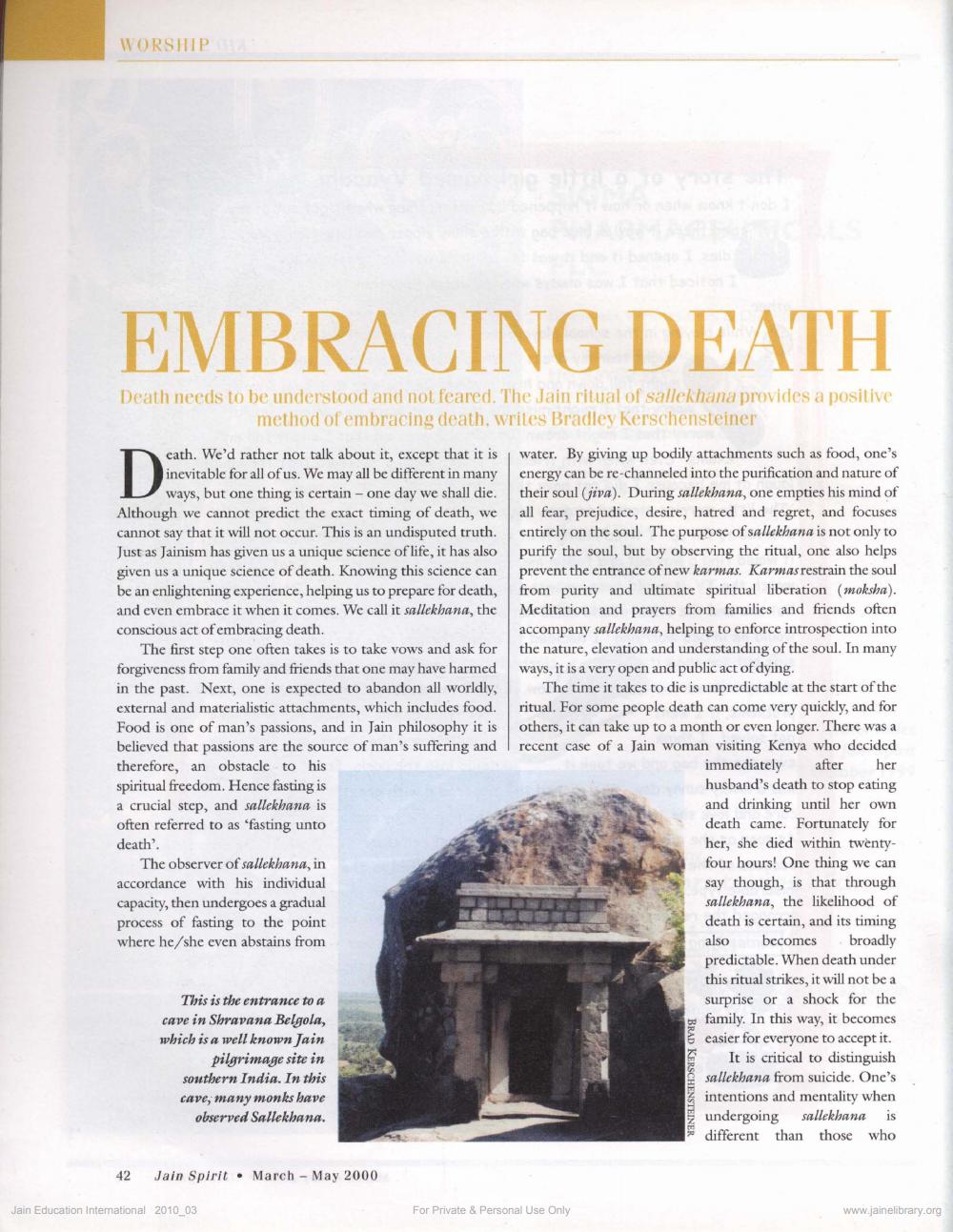________________
WORSHIP
EMBRACING DEATH
Death needs to be understood and not feared. The Jain ritual of sallekhana provides a positive method of embracing death, writes Bradley Kerschensteiner
D
eath. We'd rather not talk about it, except that it is inevitable for all of us. We may all be different in many ways, but one thing is certain - one day we shall die. Although we cannot predict the exact timing of death, we cannot say that it will not occur. This is an undisputed truth. Just as Jainism has given us a unique science of life, it has also given us a unique science of death. Knowing this science can be an enlightening experience, helping us to prepare for death, and even embrace it when it comes. We call it sallekhana, the conscious act of embracing death.
The first step one often takes is to take vows and ask for forgiveness from family and friends that one may have harmed in the past. Next, one is expected to abandon all worldly, external and materialistic attachments, which includes food. Food is one of man's passions, and in Jain philosophy it is believed that passions are the source of man's suffering and therefore, an obstacle to his spiritual freedom. Hence fasting is a crucial step, and sallekhana is often referred to as 'fasting unto death'.
The observer of sallekhana, in accordance with his individual capacity, then undergoes a gradual process of fasting to the point where he/she even abstains from
42
This is the entrance to a cave in Shravana Belgola, which is a well known Jain pilgrimage site in southern India. In this cave, many monks have
observed Sallekhana.
Jain Spirit March May 2000
Jain Education International 2010_03
To po
water. By giving up bodily attachments such as food, one's energy can be re-channeled into the purification and nature of their soul (jiva). During sallekhana, one empties his mind of all fear, prejudice, desire, hatred and regret, and focuses entirely on the soul. The purpose of sallekhana is not only to purify the soul, but by observing the ritual, one also helps prevent the entrance of new karmas. Karmas restrain the soul from purity and ultimate spiritual liberation (moksha). Meditation and prayers from families and friends often accompany sallekhana, helping to enforce introspection into the nature, elevation and understanding of the soul. In many ways, it is a very open and public act of dying.
The time it takes to die is unpredictable at the start of the ritual. For some people death can come very quickly, and for others, it can take up to a month or even longer. There was a recent case of a Jain woman visiting Kenya who decided immediately after her husband's death to stop eating and drinking until her own death came. Fortunately for her, she died within twentyfour hours! One thing we can say though, is that through sallekhana, the likelihood of death is certain, and its timing also becomes broadly predictable. When death under this ritual strikes, it will not be a surprise or a shock for the family. In this way, it becomes
For Private & Personal Use Only
BRAD KERSCHENSTED
easier for everyone to accept it.
It is critical to distinguish
sallekhana from suicide. One's
intentions and mentality when
undergoing sallekhana is different than those who
www.jainelibrary.org




